
Review on Crucial PC3 12800 Unbuffered SODIMM 204 Pin by Jimmy Garcia

Great update for Lenovo Y410P, HP Chromebox. CT2K8G3S160BM/CT2C8G3S160BM and CT2KIT102464BF160B/CT2CP102464BF160B are identical
I purchased the Crucial CT2K8G3S160BM 2x8GB to increase the memory in my Lenovo Y410P laptop from 8-GB to 16-GB . My Y410P has two memory slots and one slot is already occupied by a factory Samsung M471B1G73QH0-YK0 8GB memory card. I could probably just add another 8GB card. But to avoid possible memory failures, I prefer not to mix different types of memory cards. Samsung's existing memory was PC3L/DDR3L, where the "L" stands for low voltage 1.35V memory, while standard PC3/DDR3 memory uses a higher voltage of 1.50V. You should not mix memory with different voltages or use memory with the wrong voltage as your laptop may not even boot. Also, to further increase compatibility with my laptop since it came with 1600MHz CL11 memory, I wanted to stick with the CL11 CAS latency speed rather than choosing memory with a faster (lower) CL rating. Some CL9 memory cards have higher specs, but I really don't think most people will notice the extra 2ns latency. So I ordered this CL11 1600MHz memory because I wanted to match the exact specifications of my laptop's original 8GB memory card to ensure compatibility as using the wrong memory can cause system instability. And this memory worked perfectly on my laptop! In real-world testing, there's almost no difference between using CL11 memory and using some of the fancier CL9 memory, and the slight difference in speed isn't worth paying the extra for pricier models. CL9 memory or faster. When comparing CL7, CL9, and CL11 application benchmarks for most applications, the differences are mostly 2% to 4% differences in test times. Besides the CL listing, bandwidth is another important measure of memory performance, and this Crucial DDR3 1600MHz memory has a very good maximum bandwidth of 12800MB/s. But what does that mean in terms of actual performance? Relatively few. As long as you have enough memory to store the applications you run without swapping them out, RAM speed is very rarely a performance bottleneck. Even with quad-core processors, the bottleneck is likely to be the CPU. This is because CPU branch prediction algorithms are so accurate that in the vast majority of cases the data is already in the cache when the CPU needs it. Therefore, direct access to RAM is fairly rare. The branch predictor is like the processor's personal assistant; He guesses what information the boss needs next and makes sure it's on his desk when he needs it. Sometimes the assistant makes a mistake and the boss has to look up the information himself. From the CPU's point of view, "snooping around" means retrieving information from RAM or (worst case) disk, while "on the boss's table" is equivalent to the CPU's cache. And if your computer has an SSD with Intel Smart Response Technology, or if your computer uses SSDs instead of hard drives, it can pull data from a fast SSD instead of reading from a slower hard drive. So the days are long. -Disappearing when buying expensive, high-end RAM actually has a measurable impact on your computer's performance. As long as it meets the basic specs required by your chipset, you're not going to get much by paying more. Some performance gains are possible by purchasing better RAM, but these days most benchmarks show that such performance gains are minimal. much, much lower than what you'd get by adding more RAM (not necessarily faster RAM, just *more* RAM) or a faster processor. That was not always so. When the Pentium IV first came out thirteen years ago, it used a new type of RAM that had very high bandwidth at the time, but also very high latency. AMD Athlon used traditional RAM with lower bandwidth and lower latency. Some types of applications (e.g. video and audio conversion) were very sensitive to bandwidth but less sensitive to latency. These types of applications have shown significant performance gains using the Pentium IV. Other applications (typically gaming and office applications) were more latency sensitive and favored the Athlon. Overall, this Crucial memory is a great buy! Don't pay too much for memory just because the memory brand or model advertises better performance. If you're an avid PC gamer with a $4,000 gaming laptop, you can opt for faster, high-performance memory to complement your top-of-the-line processor and graphics. However, most people should focus much more on how the specs of this memory are compatible with your system, since the differences between the CL ratings are negligible considering a CL rating difference of 2 or 3 if you have a Use memory that does not match or is incompatible with your computer. can cause many problems. After removing the original 8GB Samsung memory from my Y410P laptop and adding these two Crucial SODIMM cards, I ran the Windows Experience Index test again and got the same Memory Operations Per Second (MEI) WEI from 8.1. What I had with Samsung's storage. WEI Processor Calculations Per Second also remained unchanged at 8.1. This is not surprising since both the original Samsung memory and this Crucial memory have the same specifications. I also bought a Crucial 8GB memory card to upgrade my HP Chromebox, which only comes with 2GB of memory in one memory slot. There is a lot of misleading information on the internet that the maximum amount of memory you can use in an HP Chromebox is 4GB. That's not true, however, as the HP Chromebox can take full advantage of 8GB of storage. After I updated my HP Chromebox, the Memory Monitor app in its Chrome OS showed the amount of memory as 7.9GB. 2GB of storage is enough for a Chromebook/Chromebox if you're just browsing a website with a few open tabs. However, if you plan to open a lot of tabs and run a lot of apps, or plan to install Linux or Windows on your Chromebook/Chromebox, more memory will improve performance. Kits with the same specifications, each memory product has two different part numbers: CT2K8G3S160BM/CT2C8G3S160BM Crucial 16GB (8GB x 2) DDR3 1600MHz Kit (PC3-12800) CL11 SODIMM 204-pin 1.35V/1.5V Mac Memory CT2K8G3CTS160BM/CT2C8G3S160BM/ 2BCP2KIT1012464KIT1012464 Crucial 16GB (8GB x 2) DDR3 1600MT/s Kit (PC3-12800) CL11 SODIMM 204pin 1.35V/1.5V Notebook Memory CT240BIT16. The CT2K8G3S160BM/CT2C8G3S160BM and CT2KIT102464BF160B/CT2CP102464BF160B are exactly the same memory cards, with the only difference being that the CT2K8G3S160BM/CT2C8G3S160BM product is for Mac computers and says "Mac Compatible" on the packaging. However, all of these four items are fully interchangeable as they contain the same memory cards. So if you decide this is the right memory for your computer, just pick one of these four Crucial part numbers that is cheaper :-) I bought the Revain CT2K8G3S160BM/CT2C8G3S160BM because it was $30 cheaper was than the CT2KIT102464BF160B/CT2CP102464BF160B catalog included in the product. time (of course prices can change daily). Both products are dual-voltage and can operate in 1.35V PC3L/DDR3L or 1.50V PC3/DDR3 memory slots. Both products are Mac compatible, but are also not Mac or PC specific and work equally well with PC, Mac and Chromebook/Chromebox.[.]. If you have any questions, please feel free to ask.
- Compatibility assurance when using the Crucial System Scanner or Crucial Advisor Tool
- So-so
New products
Comments (0)
Top products in 🧰 Computer Internal Components
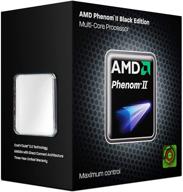
AMD Phenom II X4 940 💻 Black Edition 3.0GHz AM2+ Processor - Retail

96 Review
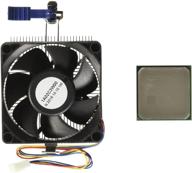
💪 AMD FD6300WMHKBOX FX-6300 Black Edition: 6-Core Processor with Unparalleled Performance

134 Review
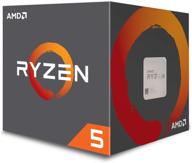
🔋 Power Up Your Gaming Rig with AMD Ryzen 5 2600 Processor with Wraith Stealth Cooler - YD2600BBAFBOX

116 Review
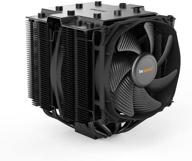
🌬️ Silent Cooling Power: Dark Rock Pro 4 CPU Cooler with 250W TDP, BK022

134 Review
Another interesting products
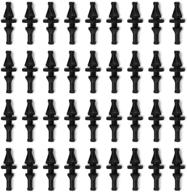
36-Pack Black Rubber PC CPU/Case Fan Screws/Rivets Set for Computer

11 Review
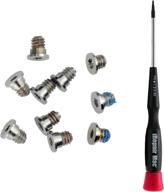
MacBook Retina 13-inch (A1425, A1502) and 🔩 15-inch (A1398) Bottom Case Screw Set with Pentalobe Screwdriver

11 Review
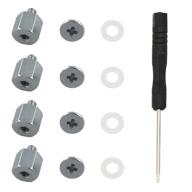
M.2 Screw Kit: Easy Mounting for NVMe SSDs on ASUS Motherboards

19 Review
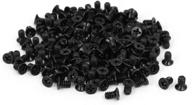
uxcell 3.5" HDD Screw Black 200pcs for Computer PC Case - Flat Phillips Head - 6#-32 - Hard Drive Fasteners

10 Review

